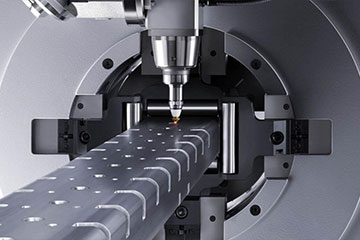Data-Driven Decision-Making: Harnessing Analytics to Enhance Efficiency in Sheet Metal Working and CNC Production Lines+ View more
Data-Driven Decision-Making: Harnessing Analytics to Enhance Efficiency in Sheet Metal Working and CNC Production Lines
+ View more
Date:2023-11-18 16:00
Introduction:
In the era of Industry 4.0, data has become a powerful asset, offering unprecedented insights and opportunities for optimization. This article delves into the strategic utilization of data-driven decision-making through analytics to improve the efficiency of sheet metal working and CNC (Computer Numerical Control) production lines. From real-time monitoring to predictive maintenance, we explore how the integration of analytics is transforming these manufacturing processes and driving operational excellence.

1. Real-Time Monitoring for Performance Insights:
Data-driven decision-making begins with real-time monitoring of sheet metal working and CNC production processes. Sensors embedded in machinery collect data on key performance indicators (KPIs) such as cycle times, energy consumption, and equipment health. By analyzing this data in real-time, manufacturers gain valuable insights into the efficiency of their production lines.
2. Predictive Maintenance for Minimizing Downtime:
Predictive maintenance, enabled by data analytics, allows manufacturers to anticipate equipment failures before they occur. By analyzing historical data and identifying patterns that precede breakdowns, maintenance activities can be scheduled proactively. This not only minimizes unplanned downtime but also extends the lifespan of machinery, contributing to overall operational efficiency.
3. Optimizing Production Schedules with Historical Data:
Historical production data serves as a goldmine for optimizing production schedules. By analyzing past performance, manufacturers can identify peak production times, resource bottlenecks, and areas for improvement. This data-driven approach allows for the creation of optimized production schedules that align with demand fluctuations, enhancing overall efficiency and resource utilization.
4. Quality Control through Data Analysis:
Data analytics plays a crucial role in quality control within sheet metal working and CNC production. By analyzing data from various stages of the manufacturing process, manufacturers can identify trends and patterns related to product quality. This insight enables real-time adjustments, reducing the likelihood of defects and ensuring that the final output meets or exceeds quality standards.
5. Energy Efficiency and Cost Optimization:
Data-driven decision-making extends to energy consumption and cost optimization. Through analytics, manufacturers can identify opportunities to enhance energy efficiency by optimizing machine usage and production schedules. This not only reduces operational costs but also aligns with sustainability goals, making the manufacturing process more environmentally friendly.
6. Supply Chain Integration for Seamless Operations:
Data analytics facilitates seamless integration with the supply chain. By analyzing data related to material availability, lead times, and supplier performance, manufacturers can make informed decisions that prevent disruptions. This integrated approach ensures a smooth flow of materials, minimizing delays and optimizing the efficiency of the entire production line.
7. Continuous Improvement through Performance Metrics:
Establishing key performance indicators (KPIs) and regularly analyzing performance metrics are fundamental to continuous improvement. By tracking metrics such as production yield, machine uptime, and overall equipment effectiveness (OEE), manufacturers can identify areas that require attention and implement targeted improvements, driving ongoing efficiency gains.
Conclusion:
The adoption of data-driven decision-making in sheet metal working and CNC production lines represents a paradigm shift towards intelligent manufacturing. By leveraging analytics for real-time monitoring, predictive maintenance, production scheduling, quality control, energy efficiency, supply chain integration, and continuous improvement, manufacturers can enhance operational efficiency, reduce costs, and stay competitive in an increasingly data-centric industrial landscape. As these industries embrace the power of data, they unlock new possibilities for innovation and sustainable growth.
Share to:
Recommend wonderful blog posts

